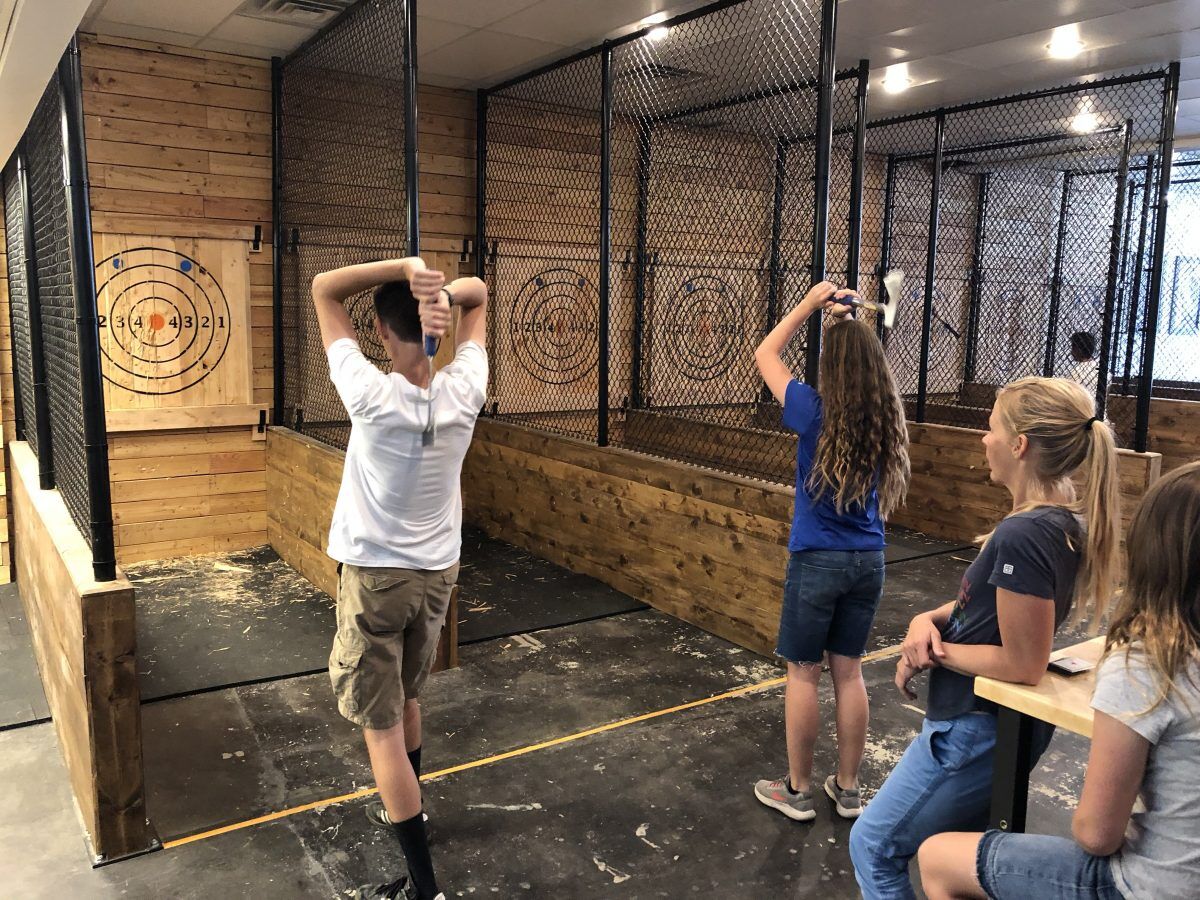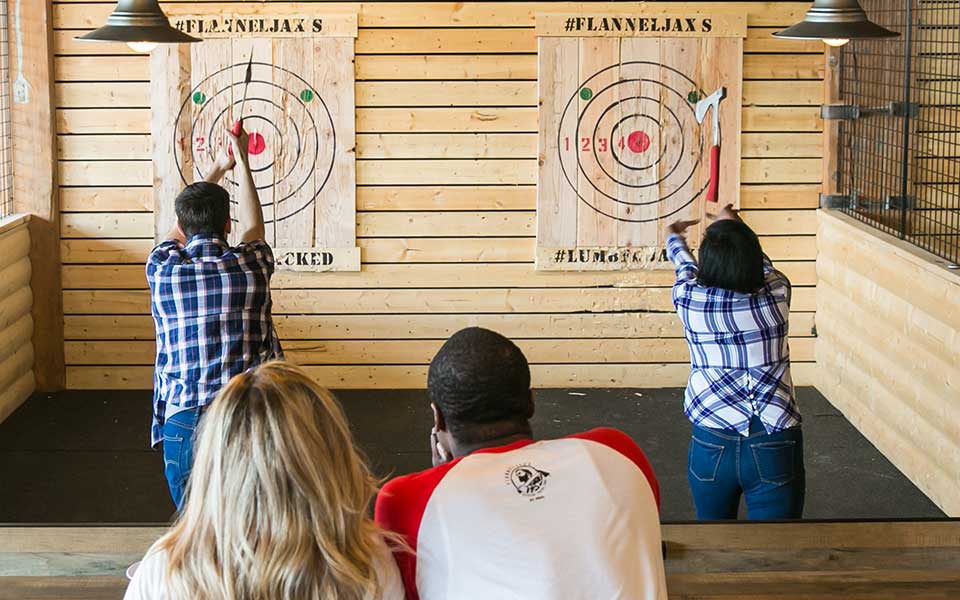Study the Axe Throwing Denver Scene: What You Required to Know
Study the Axe Throwing Denver Scene: What You Required to Know
Blog Article
The Fun of Axe Throwing: Exactly How This Sporting Activity Integrates Ability and Adrenaline for a Good Time
Axe throwing has emerged as an astounding sporting activity that masterfully links the requirement for precise skill with the thrill of adrenaline, offering participants a interesting and distinct experience. The act of tossing an axe in the direction of a target requires concentration and strategy, simultaneously cultivating an ambience of camaraderie and pleasant competition.
The Origins of Axe Throwing
Axe tossing, an entertainment activity that has acquired significant popularity recently, traces its roots back to ancient times. This primal sporting activity go back to early human background, when axes were mostly used as devices and tools. The earliest records of axe use in competitive contexts are found amongst the Celts and Vikings, who threw axes for sporting activity along with in fight training. The technique was not just a leisure activity yet a critical skill for survival and war.
Medieval European warriors, specifically throughout the Middle Ages, practiced axe tossing as part of their martial training. The Francisca, a sort of tossing axe made use of by the Franks, became iconic for its dangerous accuracy. This standard weapon was developed to be thrown at enemy guards and shield, showcasing its double energy in both sporting activity and fight.
In more current history, axe throwing saw a rebirth in the logging camps of North America in the 19th and 20th centuries. Lumberjacks would participate in friendly competitors, testing their accuracy and toughness by intending at wood targets. This development from a survival skill to an entertainment task has led the way for its contemporary revival, with dedicated venues and organizations now commemorating the sporting activity around the world.
Tools You Need
Recognizing the abundant background of axe tossing boosts the admiration of the sport's contemporary iteration. For affordable and leisure axe throwing, the most frequently used kind is the hatchet, usually evaluating between 1.25 to 2 extra pounds with a deal with size of about 16 inches.
Equally vital is the target. Policy targets are built from wood, with softwood ranges like want or cottonwood being liked for their capacity to hold the axe and soak up. The target is typically divided right into five concentric circles, each with a certain factor value, to promote rating.
Security gear, though often neglected, is crucial. Safety handwear covers can enhance grip and protect against blisters, while closed-toed shoes are a must to secure feet from gone down axes (ax throwing denver). A well-lit, large throwing location, total with safety and security obstacles, ensures a regulated atmosphere where individuals can concentrate on developing their skills.
Standard Techniques Described
Mastering the basic strategies of axe throwing is crucial for both security and effectiveness. The dominant hand ought to be placed directly below the axe head, while the non-dominant hand supports the end of the handle.
Your leading foot must be slightly ahead, lining up with your target. This positioning help in maintaining security and guiding power precisely in the direction of the target.

Safety First
Making certain safety and security in axe throwing is paramount to creating an injury-free and enjoyable experience. Precaution start with the place layout. A well-designed axe tossing center functions clear demarcations between throwing lanes, check my reference strong backgrounds to catch roaming axes, and non-slip flooring to stop crashes. Additionally, appropriate illumination is crucial to help individuals preserve aesthetic accuracy and spatial understanding.
Benefits of Axe Throwing
Axe throwing deals a myriad of benefits that extend past basic recreation. The recurring activity of tossing the axe additionally enhances hand-eye coordination and fine electric motor skills.
Psychologically, axe throwing needs accuracy, emphasis, and method, making it a superb means to sharpen cognitive skills. The focus required to strike the target can function as a type of mindfulness, allowing participants to remove their minds and lower anxiety. This psychological interaction can be especially helpful in assisting people create better analytic skills and psychological strength.
Socially, axe throwing is frequently appreciated in team settings, promoting team-building and camaraderie. Whether as part of a business event or an informal getaway with pals, the sport urges communication and cooperation. In addition, the public experience of finding out and enhancing together can reinforce relationships and create long lasting memories.
Final Thought

The earliest documents of axe use in competitive contexts are discovered among the Celts and Vikings, that tossed axes for sport as well as in battle training. Release the axe when your hands are about at eye level, enabling the axe's all-natural turning to assist it towards the target.
A well-designed axe tossing facility features clear demarcations in between tossing lanes, tough backgrounds to catch stray axes, and non-slip floor covering to avoid crashes. Participants must be advised on the correct method to handle and toss the axe, stressing managed, deliberate motions over powerful tosses.
In recap, axe throwing stands out as a sporting activity that masterfully incorporates adrenaline, accuracy, and skill.
Report this page